
New Photos
October 3, 2006
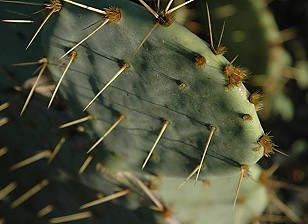 |
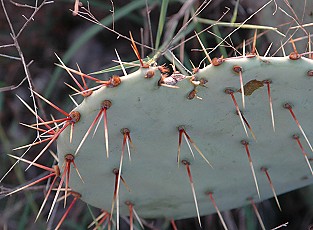 |
| From a distance, all prickly pear around here looks alike, but close up there are differences. Cactus Flats alone has two different varieties, one with more yellow-green pad color and sparse yellow-to-white spines...the "hair-spine" clusters at the base of the spines and at other "eye-spots" are dull gold to yellow. The other shows more blue-green pad color; abundant spines are multi-colored, red at the base, then orange, then yellow-white, and the "hair-spine" clusters are reddish. | |
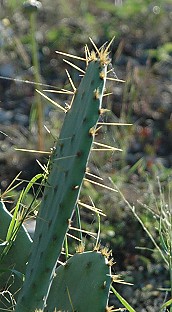 |
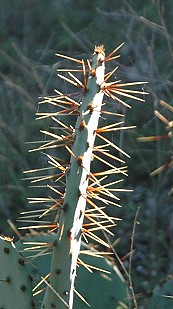 |
| In fall and winter, the lower angle of sun glows through the cactus spines. Here the difference in color and distribution really shows up. Even cactus spines can be beautiful in the right setting...not in my skin. | |
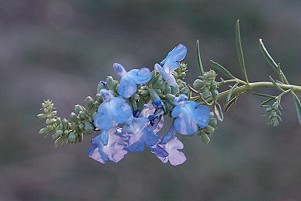 |
|
| One evening, the late sun found its way through Dragon Alley and highlighted this pitcher sage bloom. | |
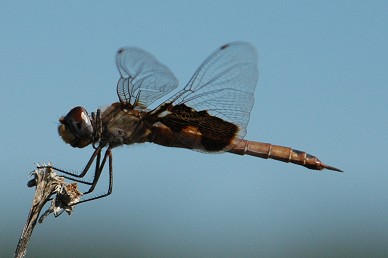 |
|
| This large dragonfly, usually seen zooming around at high speed, perched on last year's Maximilian sunflower stalk back in August. Because of the angle of the light and the height of its perch, I wasn't able to tell which of two "red" saddlebags it was--I couldn't see the distinguishing areas and I'm not familiar enough with either species. I was able to get it identified by an expert this past week: it is a Red Saddlebags, Tramea onusta. | |
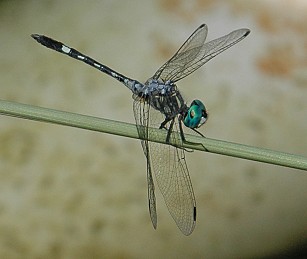 |
|
| Now, in early October, the number of dragonflies has dropped, but we still have some. This male Thornbush Dasher, Micrathyria hagenii, perched on a stalk of Indiangrass that had drooped over the round tub at the foot of Owlspring's "stream." The mottled background is the white PVC siphon between the kidney-shaped tub and the round tub...now serving as a substrate for several kinds of algae. | |
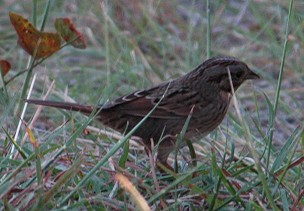 |
|
| I have no record of a Lincoln's Sparrow showing up in late September in previous years...either I wasn't looking, or they weren't here. This one was feeding in the "spill" from the hanging feeder at Owl Pavilion. | |
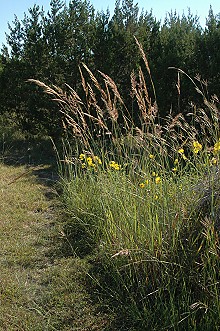 |
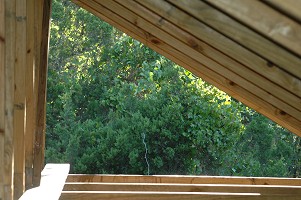 |
| Easy to see why we prefer having mowed paths to walk on...Richard had remowed this path in the NW meadow. The tallest grass here is Indiangrass, Sorghastrum nutans; the yellow flowers are Maximilian sunflower. Both are shorter than usual, because of the drought. The shorter grasses include King Ranch bluestem (KRB, non-native) , a little sideoats grama, and (out of view) silver bluestem. When we bought the place, this side of the creek was dominated by overgrazed KRB, but some tough natives had survived. Indiangrass has expanded steadily over here; little bluestem has been slower to recover. | Up on the deck at Owl Pavilion in the afternoon, the roof's shadow shades the deck without blocking the overhead view...and if you look through the "attic" you can see a beautiful green pattern of different leaf shapes and colors backlit by the sun. |
![]()

